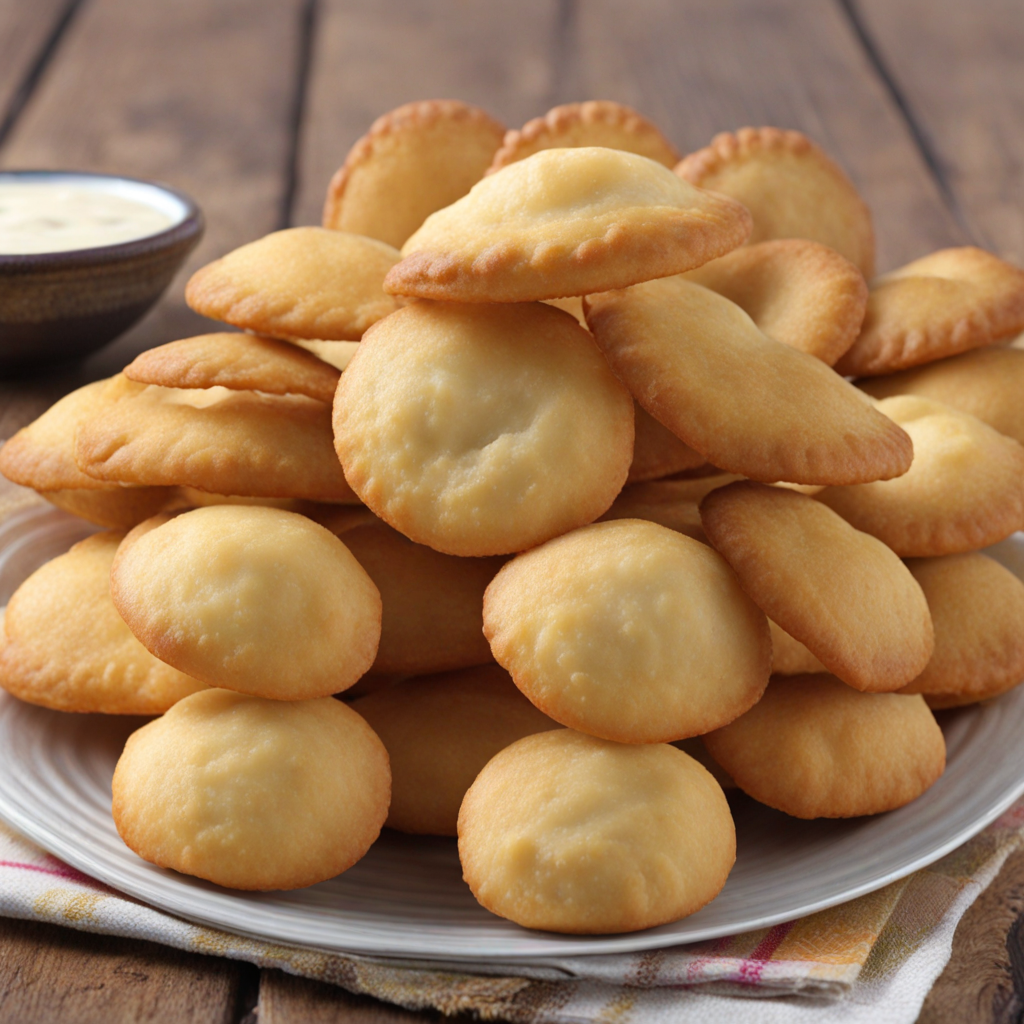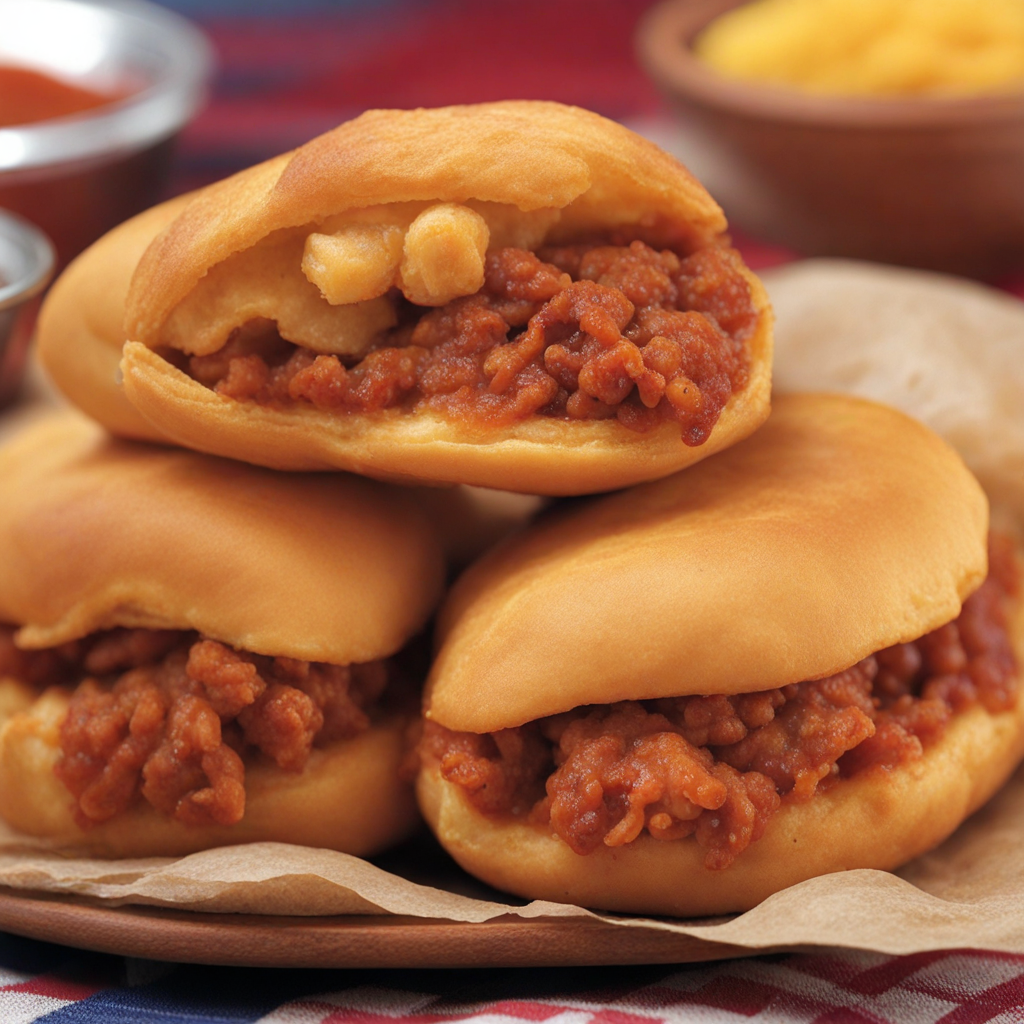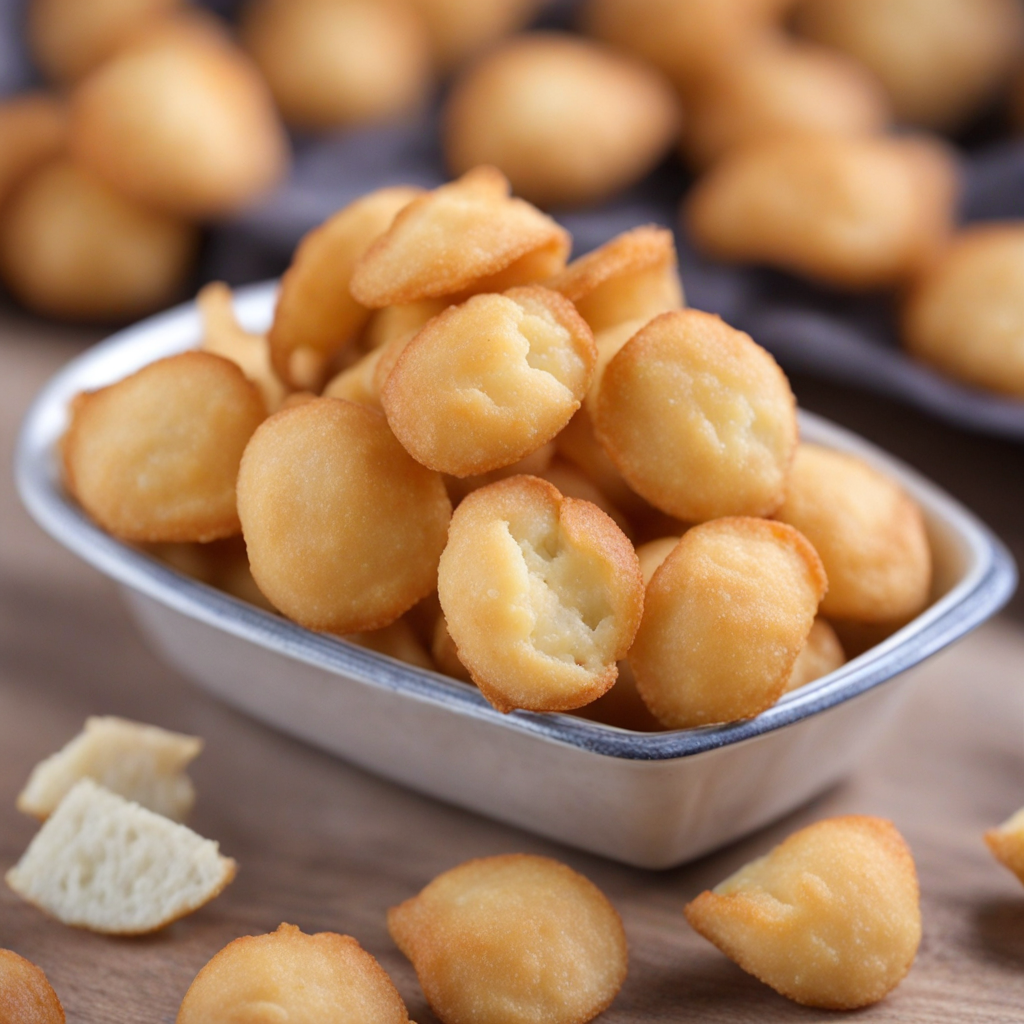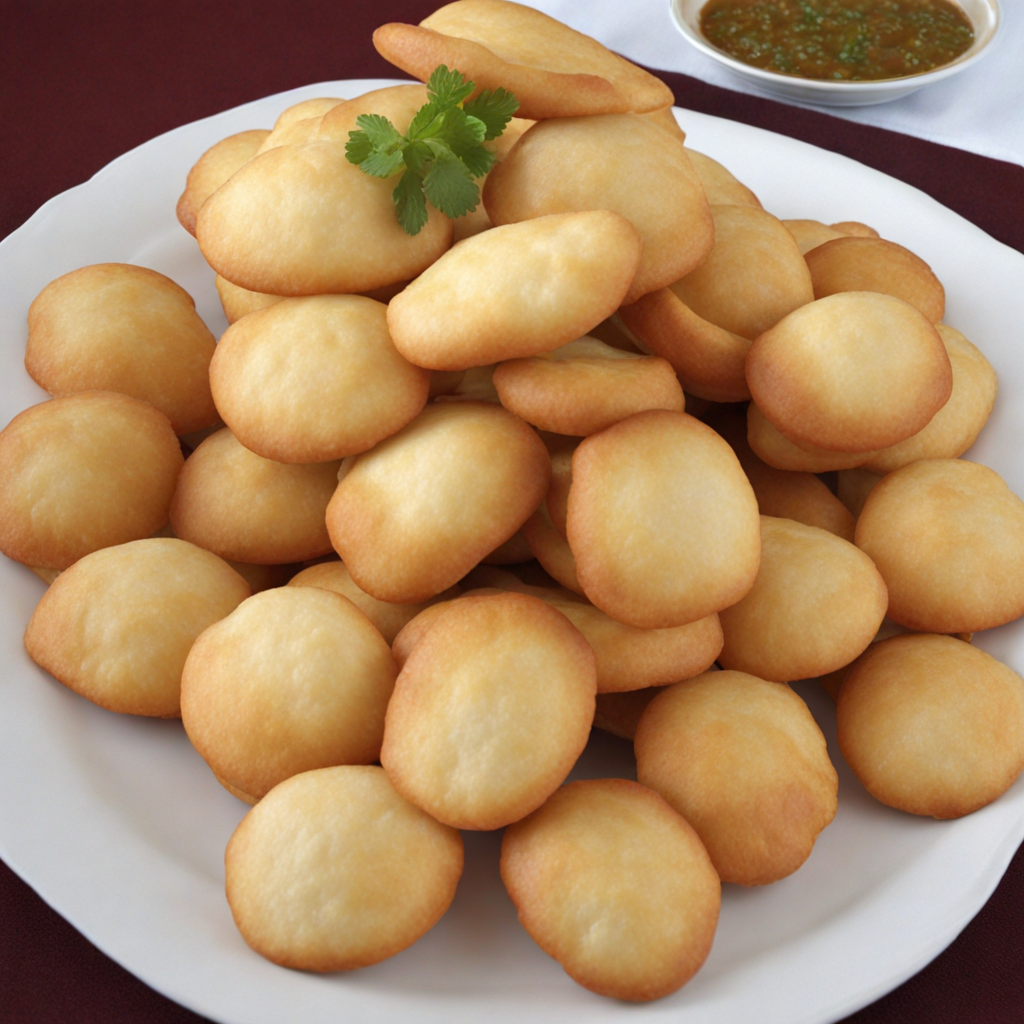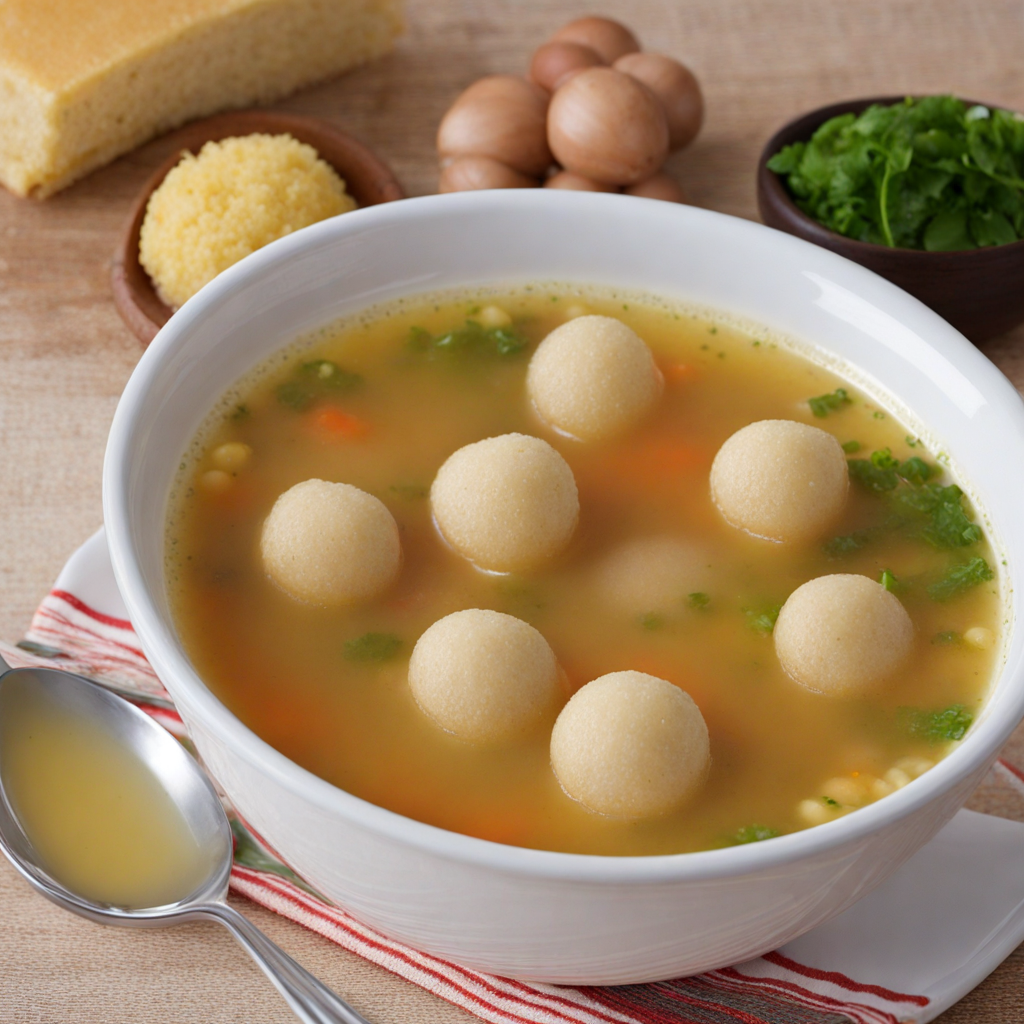Chipa Mbocá
Chipa Mbocá is a delightful Paraguayan snack that embodies the rich culinary traditions of the region. This unique food is a type of cheese bread, characterized by its soft, chewy texture and a pleasantly crusty exterior. Made primarily from cassava flour, which gives it a distinctive flavor and gluten-free quality, Chipa Mbocá is often mixed with fresh cheese, eggs, milk, and sometimes a hint of anise or other aromatic herbs, creating a savory treat that is both comforting and satisfying. The combination of ingredients results in a deliciously rich and cheesy flavor that lingers on the palate, making it a beloved staple in Paraguayan households.
How It Became This Dish
Chipa Mbocá: A Culinary Treasure of Paraguay #### Origins Chipa Mbocá is a traditional Paraguayan food that embodies the rich cultural tapestry of the region. Its roots can be traced back to the indigenous Guaraní people, who inhabited the area long before European colonization. The Guaraní had a deep connection with the land and utilized local ingredients to create sustenance that was both nutritious and flavorful. The primary ingredient of Chipa Mbocá is manioc (cassava), a staple in Guaraní cuisine. This starchy root vegetable was ground into flour, which formed the base of many traditional dishes. The word "Mbocá" itself comes from the Guaraní language, meaning "to be twisted," a reference to the traditional twisted shape of the bread. The incorporation of cheese, which became common after European contact, reflects the blending of indigenous and colonial foodways. #### Cultural Significance Chipa Mbocá is more than just a food; it holds significant cultural importance in Paraguay. It is often associated with the communal and familial aspects of Paraguayan life. Traditionally, it is made for special occasions, festivals, and gatherings, reinforcing social bonds among family and friends. Chipa Mbocá is often prepared during religious celebrations, particularly during Holy Week and Christmas, symbolizing both the spiritual and the communal essence of these events. The preparation of Chipa Mbocá is frequently a communal activity, where families or neighbors come together to share in the cooking process. This tradition fosters a sense of community and continuity of cultural practices. The act of making Chipa Mbocá can involve storytelling, sharing memories, and passing down recipes from one generation to the next, thereby reinforcing cultural identity. #### Development Over Time As Paraguay evolved over the centuries, so too did Chipa Mbocá. The Spanish colonization of the Americas brought new ingredients and cooking techniques, which influenced the traditional Guaraní recipes. Cheese, especially from cows brought by the Spanish, became a key ingredient in Chipa Mbocá, giving it a rich, savory flavor that complemented the earthiness of the manioc flour. In the 19th and early 20th centuries, as Paraguayans began to migrate to urban areas, Chipa Mbocá transitioned from a rural staple to a popular street food. Vendors began selling it in markets and at roadside stands, making it accessible to a broader audience. This urbanization led to variations in the recipe, with some incorporating additional ingredients like eggs, milk, or different types of cheese, catering to changing tastes and preferences. The 20th century also saw a rise in the popularity of Chipa Mbocá beyond Paraguay's borders. As Paraguayan immigrants settled in other countries, they brought their culinary traditions with them. Chipa Mbocá found its way into the gastronomic landscape of neighboring countries like Argentina and Brazil, where it has been embraced and adapted. Each region has developed its own interpretation, often incorporating local ingredients or methods, which has led to a rich diversity of flavors and styles. #### Modern Interpretations In contemporary Paraguay, Chipa Mbocá continues to thrive as a cherished culinary symbol. While traditional recipes are still revered, modern chefs and home cooks are experimenting with new flavors and techniques. Some are infusing the bread with herbs, spices, or even incorporating ingredients like pumpkin or sweet potatoes for a unique twist. This innovative approach reflects the broader trend of culinary fusion while still honoring the dish's roots. The rise of social media and food blogging has also played a significant role in popularizing Chipa Mbocá among younger generations. Recipes are shared widely online, along with enticing photographs that showcase the bread's golden crust and fluffy interior. This digital revival has sparked renewed interest in traditional Paraguayan foods and has encouraged people to preserve their culinary heritage. #### Chipa Mbocá Today Today, Chipa Mbocá is not just a food; it is a symbol of Paraguayan cultural identity. It represents the fusion of indigenous traditions and colonial influences, showcasing the resilience and adaptability of Paraguayan cuisine. It can be found in homes, at festivals, and in restaurants across the country, often served alongside mate, a traditional herbal tea that also holds cultural significance in Paraguay. The bread's versatility allows it to accompany a variety of dishes, from savory stews to sweet desserts, making it a staple in the Paraguayan diet. Its popularity extends beyond special occasions, as it is now enjoyed as a snack or breakfast item, often paired with cheese or cold cuts. #### Conclusion Chipa Mbocá is a remarkable example of how food can serve as a vessel for cultural expression and continuity. From its humble origins with the Guaraní people to its place in contemporary Paraguayan cuisine, it tells the story of a nation shaped by its history, geography, and the blending of diverse cultural influences. As Paraguayans continue to celebrate and innovate around Chipa Mbocá, this beloved bread will undoubtedly remain a cherished part of their culinary heritage for generations to come.
You may like
Discover local flavors from Paraguay


